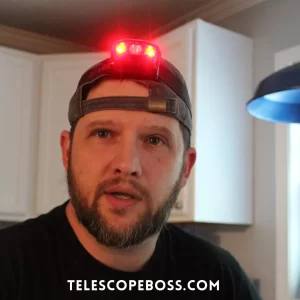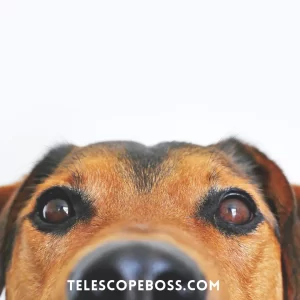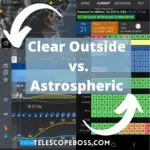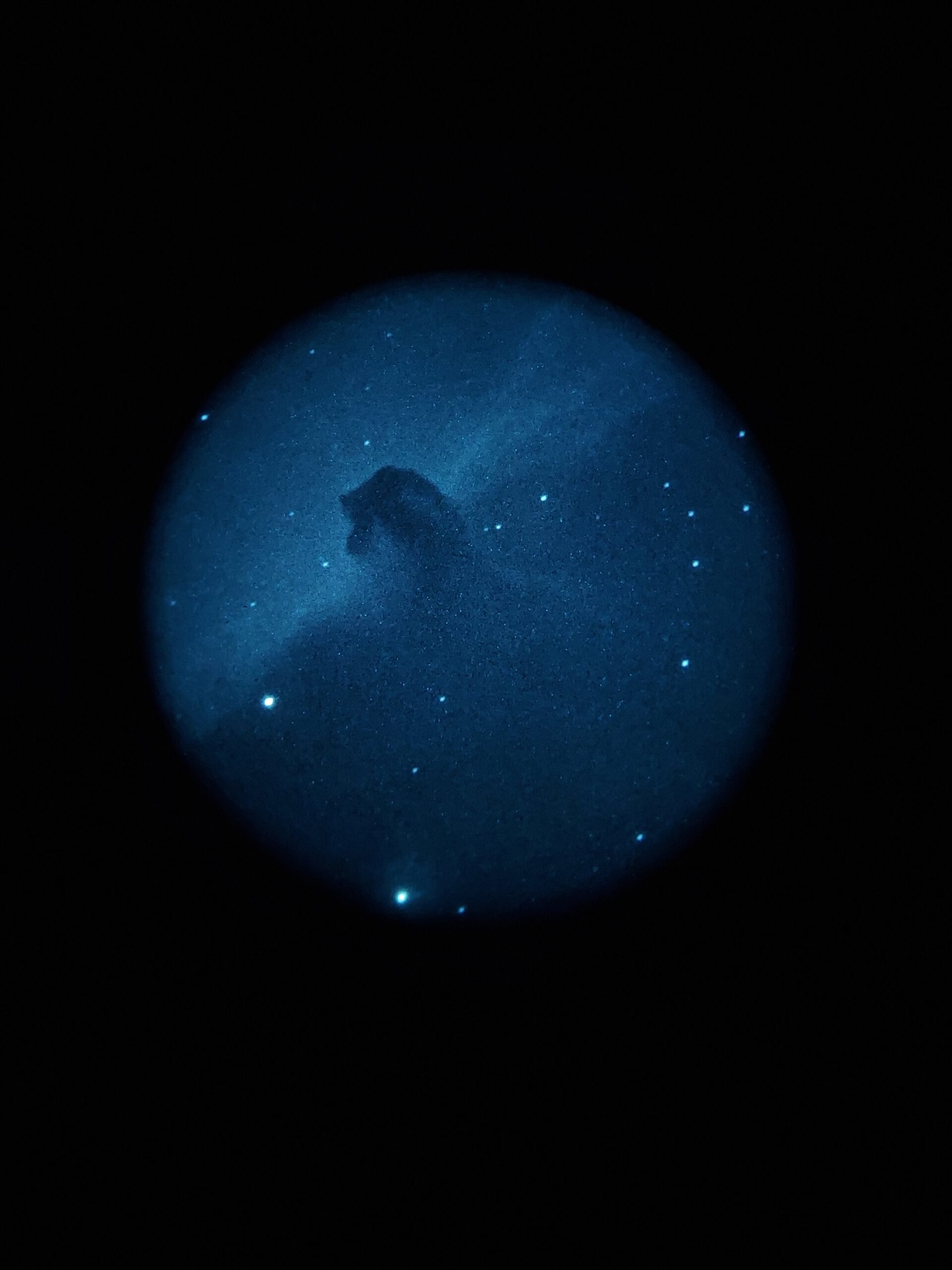When I first got my scope I was told that I needed to avoid bright light for an hour or more before observing. I took the sleep mask that came with a mattress I purchased and tried to walk around with it on. It was ridiculous, and unnecessary.
Dark adapted vision occurs between 20 and 40 minutes of being in a low light environment. Some people believe that a deeper level of dark adaptation is achieved after 2 or more hours in the dark. For astronomy this is commonly measured by the level of star brightness perceived by the eye. This varies greatly from person to person and is impacted by age, diet, health and normal vision.
There are two main types of cells in your eyes, rods and cones.
Rods perceive light, but they do not see color. These are the most common type of cell in your eye and they are in a higher concentration around the edges of your vision, not in the center of what you are observing.
Cones also perceive light, but they also process color. There are significantly fewer cones than rods, and they are concentrated in the center of your eye.
Rods are responsible for your vision becoming dark adapted. Allowing your rods to reset and adjust to the dark takes about 20 minutes, but this number is different for everyone.
Experiment with your own vision to see how long it takes your vision to become dark adapted.
Here is how:
Look at a sky chart or app to find a few stars and make a note of their brightness. The brightness is measured in Magnitude.
The scale is reverse logarithmic scale which means the brighter objects have a lower apparent magnitude and small numbers represent great change.
So I am in a Bortle 4, and without dark adapted vision I can see Pleiades which has an apparent magnitude of 1.6. I know my eyes have become dark adapted when I can see the Double Cluster at 3.7 or Andromeda with a 3.44.
Some people believe that the real work starts at the eyepiece, when you are actually observing. They say that you start adapting when you start looking through an eyepiece.
It is recommended to start by observing fainter objects for the first hour or so to allow your eyes to adjust. Move on to brighter objects and planets only after the dimmer objects have been observed.
A night of observing almost always begins with a length of time waiting for your scope to acclimate to the ambient temperature. Be sure to allow plenty of time, there are a lot of reasons your scope needs to cool down.
Use this time to let your vision adjust, take time to simply observe the sky with your naked eye. Get to know the constellations that are visible in your area at this time of year. Invest in a paper sky map, star map or planisphere. While your vision is adapting you can build your knowledge.
Choose a few objects that you hope to find that night, building that anticipation will make your night all the more exciting.
It is important to be careful not to disrupt your vision with bright lights once your eyes have become dark adapted.
Just a few seconds of bright light restarts the process of dark adaptation.
How to protect dark adapted vision?
It is always a concern when I do outreach to educate people on keeping a site dark. There is usually a flurry of headlights and cell phone light when new people arrive to observe. When I invite them I request that they use their parking lights only and, they usually remember to turn off their headlights when they enter the observing area.
One time a police officer came to my observing site, which is in a public place. He was wondering what the heck I was doing.
All those lights immediately ruined my dark adapted vision, but once he turned off his lights we enjoyed observing together for a few minutes.
Another threat to dark adapted vision is light from my phone. All the apps and groups I use to help me observe are on my phone. My wife also tries to text me when I am out at all hours!
Sometimes I am tempted to look at sky map app or make a post in an astronomy group while I am out observing. If I do, I make sure my brightness is all the way down on my phone, but I do lose some dark adaptation. (If I could recommend one app, it would be a weather app, read more here.)
There are red goggles that may be helpful if you need to look at a bright screen or camera while observing. I have never tried them.
Red Light is easier on dark adapted vision. It has to do with the makeup of the cones in your eye.
I actually read a study once that looking at red light can heal your vision. I don’t remember all the details, but it was interesting.
It is recommended that you use a headlamp with a red light. This can provide visibility when setting up or changing eyepieces without doing so much damage to your night vision.
Even red light should be as dim as is practical and LED is gentler than traditional red incandescent or red painted flashlights.
If you are observing a very light polluted area, you can use the eye cup to block out stray light. Press your eye into the eye cup to create a light proof seal. You may want to use a filter, we have some recommendations in this post.
Some people will wear heavy hoods or use a towel to cover their head while they observe.
I observe in a gravel lot that is next to a few rural roads, there are cars driving past most of the night, but unless I look right into their headlights it does not impact my dark adapted vision.

What is averted vision?
Averted vision is when you look at an object in your peripheral vision. It is a skill that you can develop to help you see more clearly, and distinguish details in dim objects. The central part of your vision has fewer rods which more easily perceive light, so by using the edges of your vision with more rods, you will perceive lower levels of light.
I have used averted vision to try to get a better view of two objects that are in the same field of view.
This is recommended when viewing Andromeda for example, M110 is another galaxy in the same field of view. Try to focus on M110 to view Andromeda which will be in your periphery. Because of the arrangement of rods and cones in your eye, it can be easier to see more detail in the peripheral.
So find an object to observe then find a star in the same field of view. Move the star to the center of the field of view and try to observe the objects at the edge of the field. Notice how much brighter they appear and how much more detail is apparent.
This is a skill that needs to be practiced, it is awkward at first, but worth it when mastered.
M57 the Ring Nebula is a great object to observe with averted vision. Focus on a nearby star and you may even be able to perceive color.
Try this technique with :
M27 The Dumbell Nebula
M 51 and a smaller galaxy near M51
Jupeter and its moons (save this to the end of the night as it is pretty bright)
How do you speed up dark adaptation?
You can speed up your dark adaptation by putting an eye patch on your observing eye. This will allow you to move about your evening while that eye becomes more accustomed to the dark.
When you are traveling to dark sites, camp and go to sleep before observing. I have found this to be a great way to observe.
I wake up with fully dark adapted vision, all I have to do is not ruin it!
Other ways to deepen or improve your night vision is to stay healthy and get plenty of vitamin a. Give yourself plenty of time to adjust your vision.
Take extra precautions with your eyes in your everyday life. Wear safety goggles, avoid excessively bright lights and keep any eye glasses or contact prescriptions up to date.
Can you see color through a telescope?
If you have seen the beautiful NASA pictures and you are expecting to see that level of color and detail through your telescope you will be disappointed. This expectation is a huge hobby killer. Knowing what to expect will make observing so much more enjoyable. Check out our guide to avoiding hobby killers here.
When observing visually there is a great sense of accomplishment when locating objects and perceiving any level of detail. Observing is like a treasure hunt in the sky.
You can see color through a telescope when the object is bright enough. Choosing the right filters and aperture will give you the greatest chance to perceive color when observing. Astrophotography, using strategies that are impossible for the human eye, can create images with vibrant colors through a telescope.
You can only see color when it is paired with bright light. Try looking at Jupiter or Saturn, you will be able to distinguish the brown and red of these planets.
Some of the easiest objects to see with color are the double stars. These are objects I go to often when doing outreach. I usually just let my SyncScan find them.
The Ring Nebula can be seen to have color depending on your aperture. An aperture greater than 6 inches is recommended for nebulae.
Diffused nebulae are harder to perceive color because they are so spread out there is no one area of concentrated light to help your eye distinguish the color.
Using a nebula filter on your scope can help you see more color and more detail. I recommend UHC and OIII. These filters sit on your eyepiece and filter the kinds of light that enter your eye.
The UHC filter will help with light pollution a little more, I use it when I observe M8 and M42.
You can use an 82A filter to bring greater contrast definition when observing the planets. Even a moon filter when looking at Jupiter is not bad.
If you want to explore more colorful objects in the night sky, let me recommend:
Pleiades is a bright blue, the Lagoon nebula is very bluish, and Orion has a strong hint of green.
In doubles you will see orange and blue or red and blue. Planets will probably be the most colorful because they are so bright.
Fall Observing Guide
Winter Observing Guide
Can humans see in complete darkness?
Humans are not designed to see well in darkness. If you have ever looked at an animal and their eyes appeared to glow, you were seeing the tapetum lucidum. This is a structural difference between human and animal eyes.
This allows these animals to see more clearly in low light. It is a reflective membrane.
Human eyes, however, are made up of cones and rods arranged on the retina. These structures are extremely sensitive to light. Even low levels of light activate the rods, and they are slow to recover. This makes it extremely difficult for human eyes to adjust quickly to the dark.
Once your eyes have adjusted to the darkness, called dark adaptation, this state can be disrupted by just a few seconds of bright or moderately bright light.
If you are observing in complete darkness, use red light to illuminate your work space for safety.
It is recommended that you use LED lights that can be dimmed to the lowest level that is workable for your conditions. This is the best way to ensure your vision stays dark adapted.







